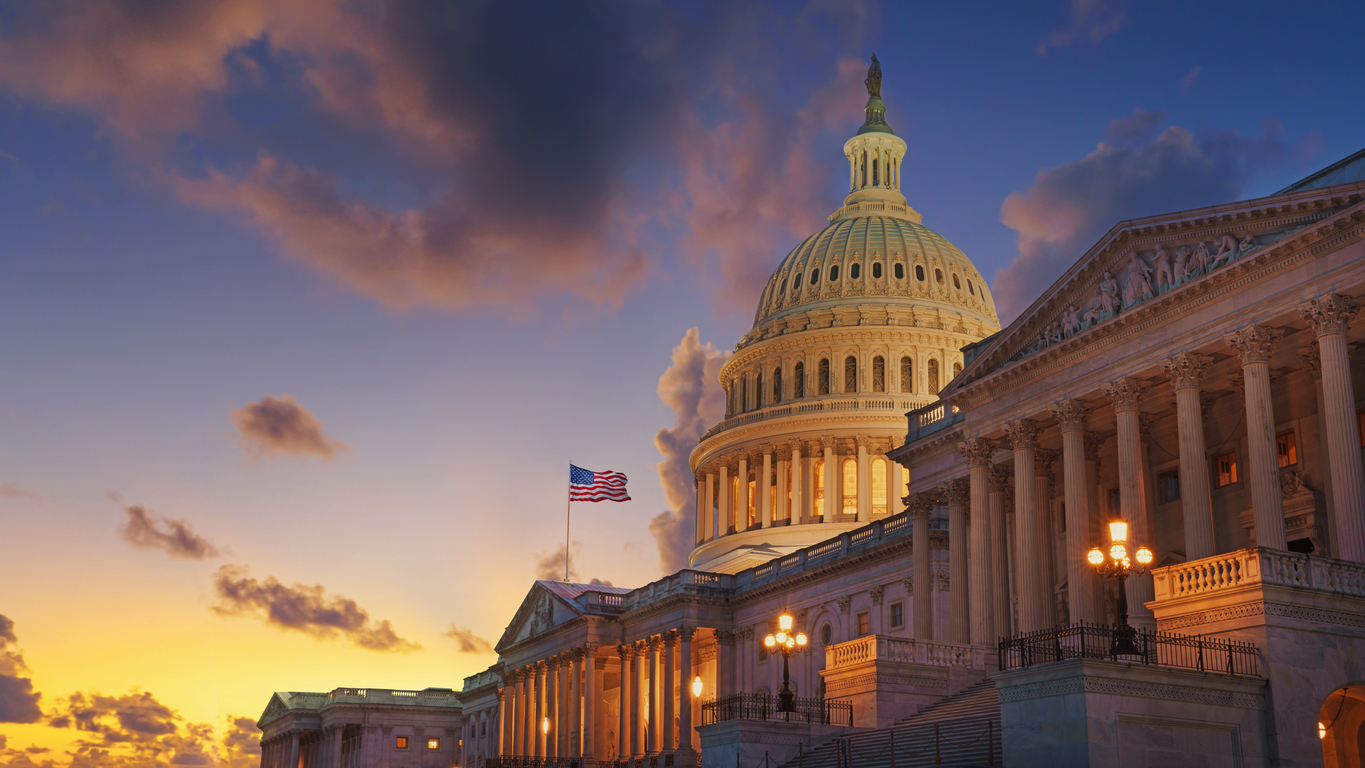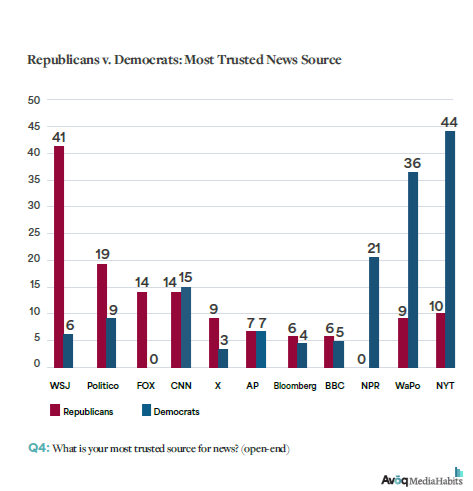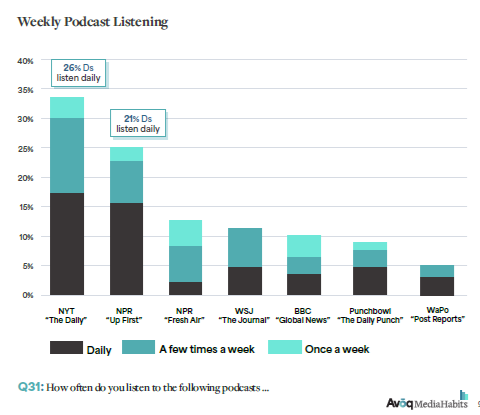By the Numbers: Where D.C. insiders get their news
From newsletters to podcasts.

The goal of media relations is never to get clips for the sake of getting clips. It’s always to get placed in the media that your audience values and trusts most so that you can impact hearts, minds and behavior.
That can be tricky when you’re targeting a small, cliquish group like Washington, D.C., policy insiders.
Their trusted sources can change based on political whims, and which media you target depends heavily on which party your target affiliates with.
But a new research survey from Avoq sheds light on which mediums and outlets insiders of both parties turn to for trusted information to help them guide the country. The study is based on quantitative surveys from 200 people they deem “insiders,” with equal numbers of Republicans and Democrats.
Here’s what they found.
What influences policymakers
The good news for PR pros is that national media is still among the best ways to reach this target audience. Of survey respondents, 59% said that national journalists were a very big or somewhat big influence on policy decisions.
So, you’re barking up the right tree.
That ranks second, just behind other policy influencers (62%) and just above Google search (58%). Local journalists also have some sway too — 28% say they have at least some of an important role in influencing policy.
Don’t sleep on newsletters
The capital loves reading political newsletters to start their day. While their popularity did see a significant year-over-year decline, falling from roughly 75% daily usage to about 65%, they’re still one of the most important news sources, just behind search engines and news sites.
Across the partisan divide, Politico Playbook is the top dog in the newsletter world. Politico Influence and Punchbowl News AM are also major players.
The data indicates that while members of both parties read newsletters frequently, they are more popular with Republicans, especially the Politico-helmed emails.
The big three still rule
In unsurprising news, the most trusted sources of news are the classic trinity of the Wall Street Journal, the New York Times and the Washington Post. Also, unsurprisingly, there are massive partisan splits between trust in these outlets. Republicans overwhelmingly trust the Journal (41% cited it as their most-trusted news source, compared to just 6% of Democrats). At the other end of the spectrum, 36% of Democrats trust the Washington Post most and 44% favor the Times, compared to just 9% and 10% of Republicans, respectively.
Two other networks stood out as particularly polarizing. Fourteen percent of Republicans cited Fox News as their most trusted news source (interestingly, it tied among this demographic with CNN), but no Democrats said the same. Conversely, 21% of liberals trust NPR most, but no Republicans do.

If you’re looking for the media outlets with the most trust among both parties, you’ll want to keep an eye on CNN, the AP and the BBC.
Big social media shifts
You might expect X to be the most popular social network among the plugged-in elite. But that’s no longer the case. Avoq even offered a scathing headline on its decline: “X, formerly known as relevant.”
Ouch.
Indeed, last year 55% of respondents said they used the app multiple times per day, while this year it’s just 38%.
As one might expect, given owner Elon Musk’s public political positions, Democrats have fallen off more than their Republican counterparts. Eighty-two percent of Dems say they use it less since Musk’s acquisition, compared to 19% of Republicans. Another 20% of Republicans say they now use the platform more since the ownership change, compared to a whopping zero Democrats.
However, one platform that is popular among both parties is LinkedIn.
Nearly 75% of all insiders reported using it at least once each day, and just shy of 100% use it at least weekly. They favor it for its professional, business focus; the ability to build trusted connections; and feel it offers more substantive or serious content. It’s a go-to news source for many, with 70% citing it as important. Compare that to X, which now ranks at just 44%, who say the same.
Notably, 62% of Republicans aren’t using it just to consume news — they’re also using it to help shape their organization’s brand.
While perhaps less important as a news source, Instagram also sees heavy use, with 49% reporting they use the app multiple times each day. Showing up where your audience is, even if they’re not in active work mode, can still be an important way to reinforce your brand and help get the right information in front of the right people. To that end, 43% of insiders say they follow the Washington Nationals at least somewhat closely — another possible opportunity.
Popular podcasts
Just over half of respondents say they listen to podcasts regularly, and among those who do tune in, the vast majority tune in either daily or multiple times a week. There is a noteworthy partisan divide here as well — Democrats favor podcasts more than Republicans, 58% versus 44%. When looking at which podcasts they most enjoy, we can perhaps see why: many of the most popular podcasts come from more liberal-friendly sources like NPR and the New York Times.

What it means for journalists
Media relations, in all its forms, remain vital ways of reaching this specific audience. However, choosing exactly the right outlets and mediums for your target audience is key. Use this information to choose wisely.
Find more information about the report here.
Howard Mortman will take the stage during PR Daily’s Media Relations Conference, June 5-6 in Washington, D.C. Learn more.
Allison Carter is editor-in-chief of PR Daily. Follow her on Twitter or LinkedIn.







